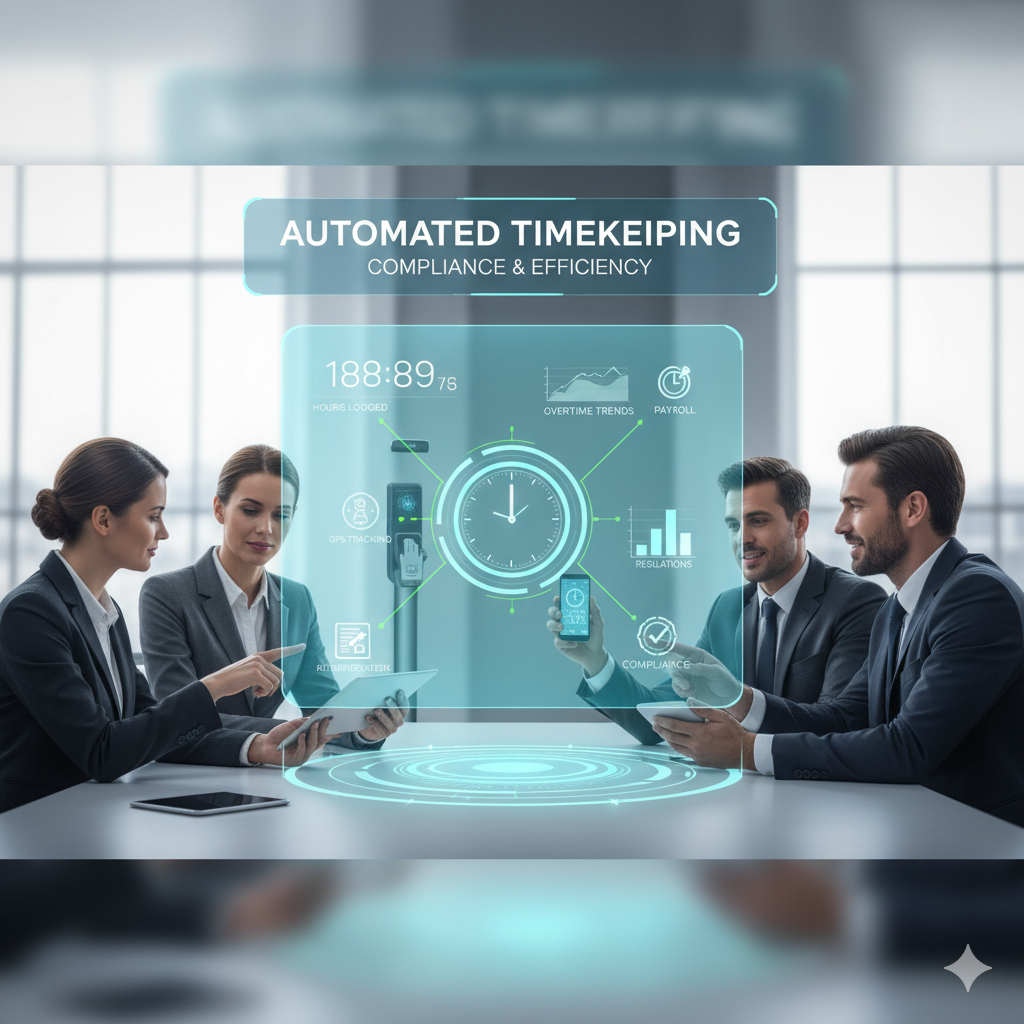Accurate timekeeping is more than just tracking hours worked — it’s a critical factor for payroll accuracy, labor law compliance, and overall workforce efficiency. Unfortunately, many businesses still rely on outdated manual methods like spreadsheets, paper timesheets, or punch cards, which can lead to errors, compliance risks, and wasted time.
Enter automated timekeeping systems — smart, digital solutions designed to streamline attendance tracking, eliminate manual errors, and help businesses stay compliant with labor regulations.
In this article, we’ll explore why automated timekeeping is essential, how it improves efficiency, and what to consider when implementing it in your organization.
The Pitfalls of Manual Timekeeping
Manual time tracking comes with several challenges:
- Human error: Employees may forget to clock in/out or make math mistakes.
- Time theft: Practices like “buddy punching” inflate labor costs.
- Compliance risks: Missing or incorrect records can result in fines during labor audits.
- Administrative burden: HR teams spend hours consolidating and verifying data.
These inefficiencies can cost businesses money and hurt employee trust.
What Automated Timekeeping Is
Automated timekeeping uses software and digital tools to record employee work hours accurately and in real time. Systems can be accessed through:
- Mobile apps
- Biometric devices (fingerprint or facial recognition)
- Web-based employee portals
- Badge or RFID card readers
These tools sync directly with payroll systems, reducing manual input and ensuring accuracy.
Key Benefits of Automated Timekeeping
- Compliance with Labor Laws: Automated systems track overtime, breaks, and schedules in line with legal requirements — helping you stay compliant with regulations like FLSA or local labor laws.
- Payroll Accuracy: By eliminating manual calculations, you reduce payroll errors, saving time and money while boosting employee satisfaction.
- Operational Efficiency: HR and managers spend less time chasing timesheets and more time focusing on strategic tasks.
- Real-Time Insights: Get instant visibility into attendance trends, absenteeism, and overtime, allowing better workforce planning.
- Employee Empowerment: Self-service portals let employees view their hours, request time off, and track leave balances — reducing back-and-forth communication.
How Automated Timekeeping Boosts Efficiency
With automation, processes that once took hours can now be completed in minutes. For example:
- Shift scheduling can be automated based on availability and compliance rules.
- Overtime alerts notify managers before costs spiral out of control.
- Integration with HRIS or payroll ensures seamless data transfer and reduces double entry.
This not only improves productivity but also fosters fairness and transparency in how hours are recorded and paid.
Implementing Automated Timekeeping
When adopting an automated timekeeping solution, consider:
- Ease of use: Choose a system employees can quickly adapt to.
- Integration capabilities: Ensure it syncs with your HR and payroll software.
- Compliance features: Look for systems that automatically apply labor laws and company policies.
- Scalability: The solution should grow with your business.
Provide proper training and communicate the benefits to employees to encourage adoption and minimize resistance.
Final Thoughts
Automated timekeeping isn’t just about convenience — it’s a strategic investment in compliance, accuracy, and operational efficiency. By embracing automation, businesses can reduce costly errors, avoid compliance penalties, and create a transparent, trustworthy work environment.
In the long run, automated timekeeping gives HR and managers more time to focus on what really matters — supporting employees and driving business growth.




